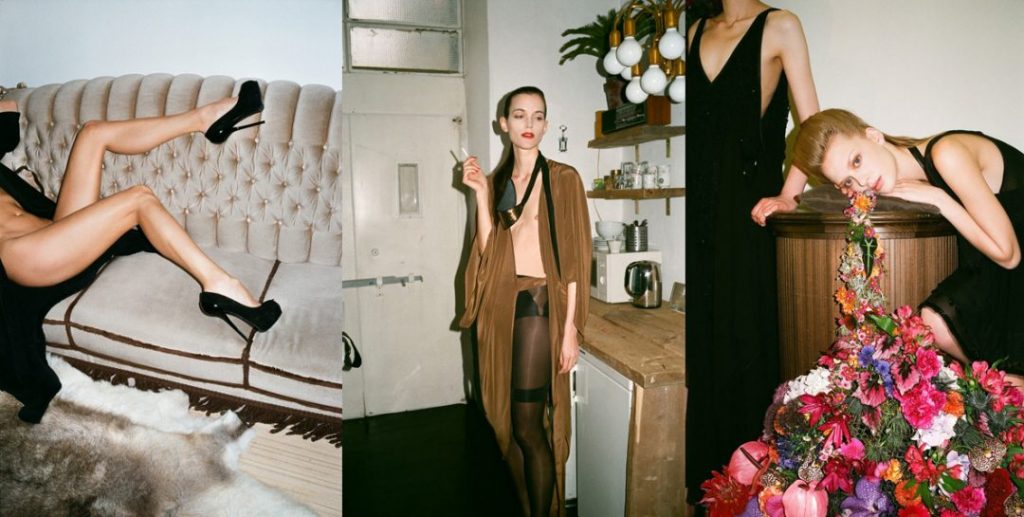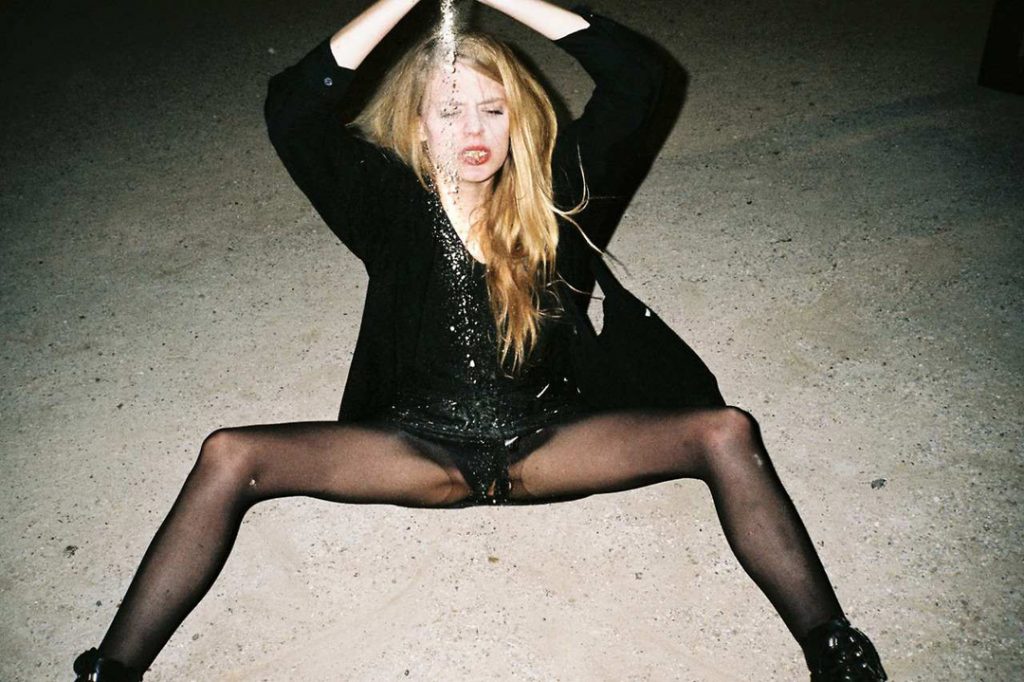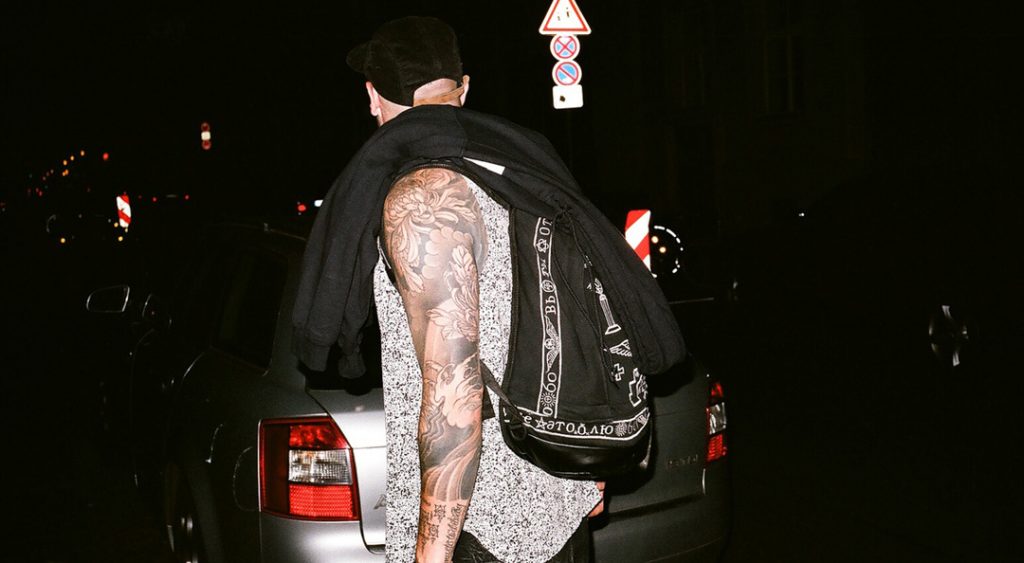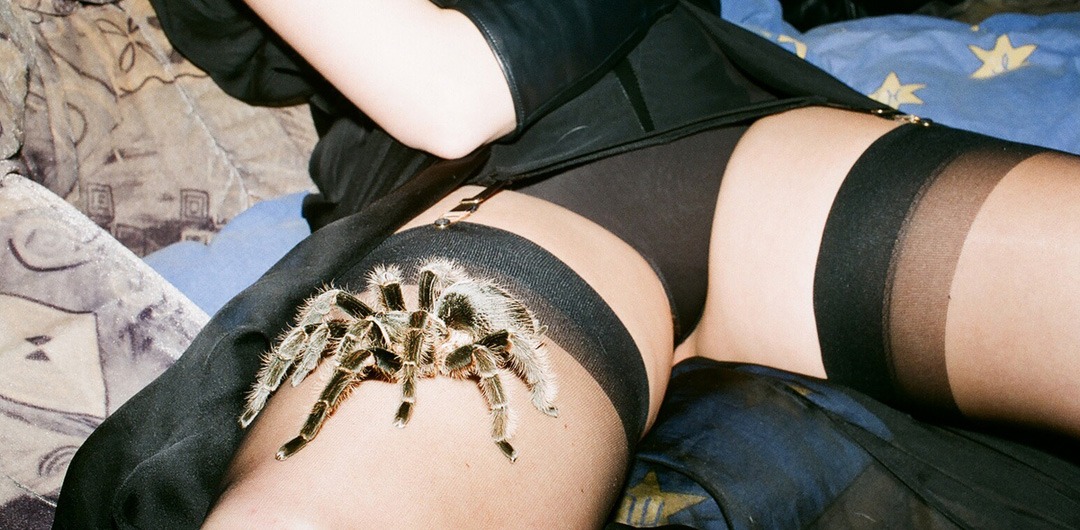Maxime Ballesteros
is considered “cutting edge”’ , but even he’s not sure why. He is very unstructured in his approach and just seems to go with the flow. He usually doesn’t dwell on nudity, per se. But if he’s at a party, and it’s all sex, drugs and rock n’ roll, count him in photographically. In fact, calling him a fashion photographer is a misnomer. And since learning to use flash, a whole world of sensual documentary, (art?), has opened up for him.

Maxime Ballesteros – Berlin Calling
He is French, from outside the medium sized city of Lyon in France. Now he lives in Berlin. In the weirdest way possible, it;s a city that seems to be the perfect fit for his style. It’s a city of clubs, youthful freedom and what sometimes feels like a constant party. Like a London of the 60’s,…but more sexualized. Debauchery seems a constant theme, but without actually trying. Making it all the more fascinating.

He’s not really a street or documentary photographer, but his knack for recording the perfect moment, and giving the viewer a sense of sensuality no matter the degree of undress, is uncanny. Like a sexualized Ryan McGinley. I in fact I don’t know this to be true, but you feel him to be an observer rather than having any directorial hand in the images.

Early Years
Ballesteros high school had a darkroom and he learned a black and white aesthetic early on. He actually became petty good in the darkroom, but limited himself to black and white. And mostly natural light photography. This was a norm for many photographers,…fear of color and losing development control, and fear of flash/strobe.

Ballesteros was black and white only, prime lenses only and manual lenses only. He finally got a flash and was able to do night shooting, and went to color. What a change in style that produced! Changing to a 35mm lens, getting closer to subjects and providing more light spread, going full color film and moving to Berlin made him a new vision photographer overnight.

Purple Kind of Guy
While most of his magazine work is Purple, Wallpaper and other only “semi fashion” magazines, the label of fashion photographer seems to stick. I personally consider him an art photographer. That said,…who needs labels.
Why Do You Shoot Film?
In an interview with Expanded Art;
“Because of the dimension of trust it forces. Should it be on a commissioned shoot or in a personal situation, you nor the subject can see what’s happening, so you have to trust each other. I like that the subject is not confronted with an image of themselves. They can forget about themselves a little bit more, I think—open up—so we can really share something together. We see in each other movement, eyes, attitudes, what works or not. It becomes very sensitive. Sometimes almost like a dance. At times I would shoot something for a client for four or five days without anybody being able to see one image. I like that. So I don’t spend too much time on the same thing. I keep finding ideas without thinking too much about what has just been done. When the film is developed, when I discover the images, I can have a fresh glance at the whole story. It really forced me to know my tools very well, until they almost became a natural extension of my eye. But I feel like it also allows me much more freedom and pushes me to always go forward to the next frame and never stay stuck on one idea. I think I like constraints. Analog also forced me to be quite efficient in the sense that I won’t make too many frames of the same thing—usually no more than two. It’s maybe a bit like shooting an arrow and trying to hit what you are aiming for in your head, versus a machine gun, shooting away and being sure you’ll hit something.
But I’m sure some digital users have the willpower to not look at their screen and use their camera exactly like an analog one—but I think I couldn’t. I’d check the screen for sure . . .”
He’s been known to shoot and sleep with a Contax T2.
Website

